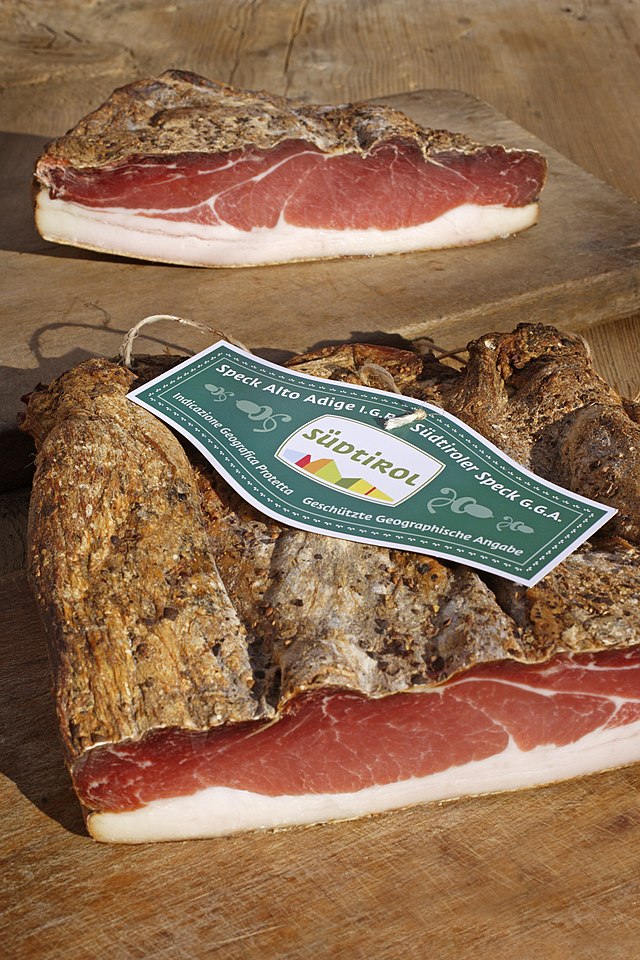Top Qs
Timeline
Chat
Perspective
Speck
European cured pork product From Wikipedia, the free encyclopedia
Remove ads
Speck can refer to a number of European cured pork products, typically salted and air-cured and often lightly smoked but not cooked. In Germany, speck is pickled pork fat with or without some meat in it. In the Netherlands and Flanders, in Dutch, spek [sic] is bacon. Throughout much of the rest of Europe and parts of the English-speaking culinary world, speck is usually South Tyrolean speck, a type of Italian smoked ham. The term speck became part of popular parlance only in the eighteenth century and replaced the older term bachen, a cognate of bacon.[citation needed]
This article may need to be rewritten to comply with Wikipedia's quality standards. (January 2015) |


Remove ads
Regional varieties
There are a number of regional varieties of speck, including:
- Bacon, e.g. Frühstücksspeck ("breakfast speck") in Germany
- Gailtaler speck from Austria, with PGI status, which has been made since the 15th century in the Gail Valley ("Gailtal") in Carinthia[1]
- Schinkenspeck, German "ham bacon", typically made from a flat cut of ham with fat along one side resembling bacon, and traditionally soaked for several days in brine with juniper berries and peppercorn
- Speck Sauris PGI, from Sauris, Friuli, Italy
- Speck Alto Adige PGI, from South Tyrol, Italy
- Tyrolean speck from Austria's Tyrol region, which has PGI status, and has been made since at least the 15th century[2]
Remove ads
Jewish deli speck
In Ashkenazi Jewish cuisine, in which bacon (like all pork) is forbidden as unkosher, "speck" commonly refers to the subcutaneous fat on a brisket of beef. It is a particular speciality of delis serving Montreal-style smoked meat, where slices of the fatty cut are served in sandwiches on rye bread with mustard, sometimes in combination with other, leaner cuts.[3]
See also
References
Wikiwand - on
Seamless Wikipedia browsing. On steroids.
Remove ads
